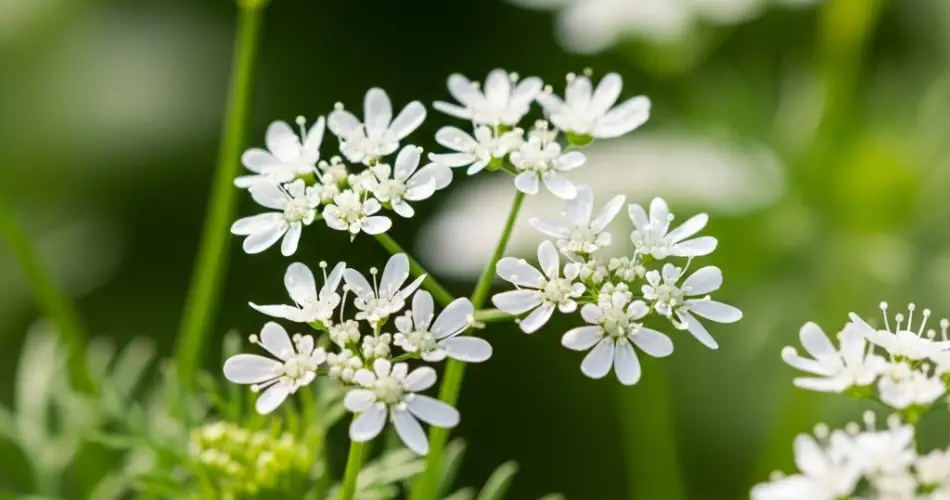Cilantro, also known as coriander, is widely appreciated for its flavorful leaves and seeds used in cooking. However, few gardeners realize the value of letting cilantro flower. Once the plant bolts and sends up delicate white blossoms, it becomes an unexpected ally in the garden—drawing in pollinators like bees, butterflies, and beneficial insects that support a thriving ecosystem.
If you’re looking to boost biodiversity and encourage pollination in your vegetable or herb garden, cilantro flowers can play a powerful role. Here’s how and why to use them effectively.
What Happens When Cilantro Flowers?
Cilantro is a cool-season herb that tends to bolt—or go to seed—when temperatures rise. When this happens, the plant stops focusing on leaf production and begins to send up tall, thin stems topped with umbrella-like clusters of tiny white or pale pink flowers.
While bolting may seem like the end of the plant’s culinary usefulness, these blossoms are a magnet for beneficial insects, especially pollinators.
Pollinators and Beneficial Insects Attracted to Cilantro Flowers
Once cilantro blooms, its flowers become highly attractive to a variety of garden helpers. These include:
-
Bees (honeybees, bumblebees, native solitary bees)
-
Hoverflies (important pollinators and aphid predators)
-
Parasitic wasps (natural enemies of many garden pests)
-
Ladybugs (whose larvae feed on soft-bodied insects like aphids)
-
Butterflies (which pollinate as they feed on nectar)
Cilantro’s delicate flowers provide easy access to nectar and pollen, making them ideal for both small and large pollinators.
Benefits of Using Cilantro Flowers in the Garden
1. Natural Pest Control
The nectar from cilantro flowers attracts predatory insects that help control aphids, thrips, and other pests. Hoverflies, in particular, lay eggs near aphid colonies, and their larvae feed on them, reducing the need for chemical interventions.
2. Improved Pollination for Fruits and Vegetables
More pollinators in your garden means better yields for crops that rely on pollination, such as tomatoes, cucumbers, melons, and squash.
3. Biodiversity Support
Allowing cilantro to flower creates a habitat and food source for beneficial insects, supporting a more balanced and resilient garden ecosystem.
4. Seed Harvesting
After flowering, cilantro produces seeds—known as coriander—that can be harvested for cooking or planting next season.
How to Grow Cilantro Specifically for Pollinators
1. Plant in Successions
Instead of harvesting all your cilantro leaves, let a few plants bolt and flower naturally. To extend the flowering period, sow cilantro seeds every 2–3 weeks in the spring and early summer. This way, you’ll always have some plants in bloom.
2. Provide Sunny Conditions
Cilantro grows best in full sun, especially if you’re aiming for abundant flowering. Make sure plants get at least 6 hours of sunlight per day.
3. Avoid Over-Fertilizing
Too much nitrogen can delay flowering. If your goal is to encourage blossoms, use compost-rich soil but avoid excessive feeding.
4. Space Plants Appropriately
Allow enough room between cilantro plants for good air circulation and easy access for flying insects.
Where to Position Cilantro for Maximum Pollination Benefits
To get the most out of cilantro’s flowering period, place it strategically near crops that need pollinators. Good companion plant locations include:
-
Along the edges of raised vegetable beds
-
Near cucumbers, squash, and melons
-
Beside tomatoes and peppers
-
In herb gardens alongside dill, basil, and parsley
You can also plant cilantro among ornamentals or in pollinator-friendly garden zones to create a continuous source of nectar.
Letting Cilantro Go to Seed: Extra Advantages
If you allow your flowering cilantro to fully mature, it will form seeds you can harvest for multiple purposes:
-
Replanting: Save seeds to grow fresh cilantro in the next season.
-
Cooking: Use coriander seeds in pickling, spice blends, or curry dishes.
-
Self-sowing: If left in place, cilantro often drops seeds that germinate on their own, creating a natural cycle of new plants.
Final Thoughts
Instead of pulling up cilantro as soon as it bolts, consider letting it flower and watching your garden come alive with beneficial insects. Cilantro flowers are not just pretty—they’re practical, drawing pollinators and pest controllers that help your entire garden thrive.
Whether you’re growing herbs for flavor, seeds for spice, or simply hoping to attract more bees and butterflies, flowering cilantro can become a key part of your pollinator strategy. With minimal effort, you’ll support a healthier, more productive garden just by letting this versatile herb do what it naturally does best.



